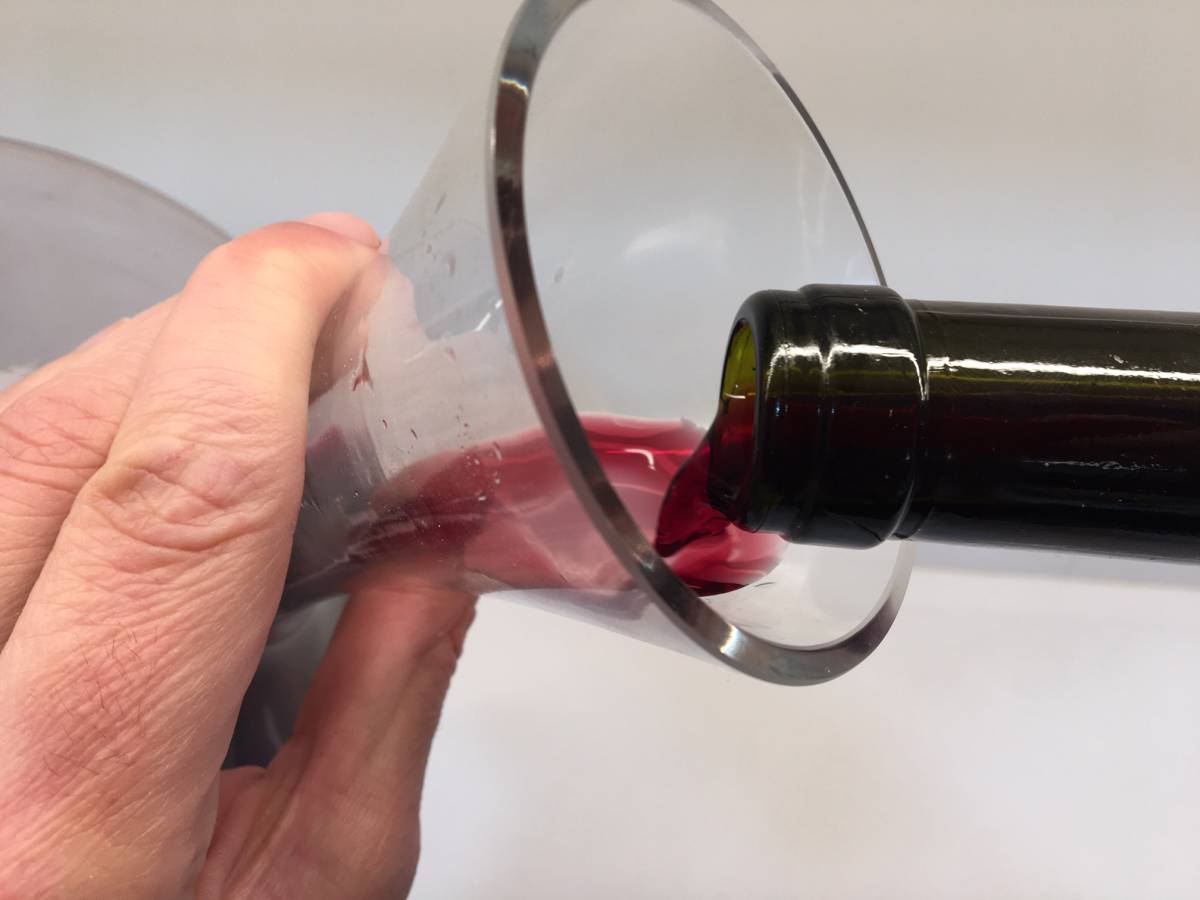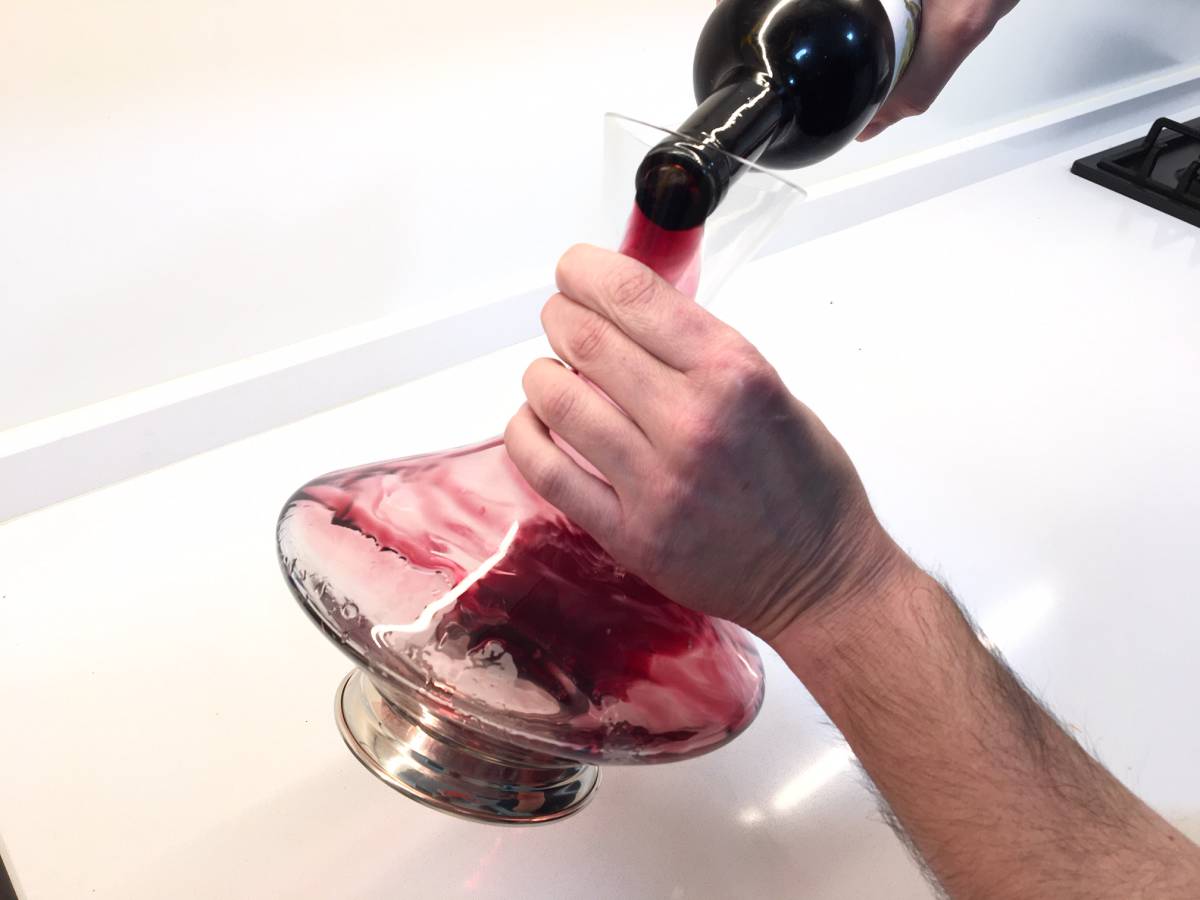Prepare a wine tasting at home
Simple steps to enjoy a wine tasting with family or friends

The decanter is an eye-catching object in its own right, one that attracts attention at the table. It even gives the feeling that all the wine inside it will be good. But is it a useful and necessary object to improve the wine?
The decanter is a tool that can serve two different functions: decanting or oxygenating. A wine is decanted when we think that, because of its age or the type of production, it may have deposits. These can appear because it is a wine that has not been subjected to a process of clarification or filtration, or simply because its old age is leaving sediments at the bottom of the bottle. Many winemakers consider that filtration is a harsh process for the wine, in which more than just the sediment is lost (to the point of affecting the taste) so they avoid filtration. It is common for the winery to warn about this on the label of the bottle, indicating that the wine may contain sediment. So if we read it on the bottle itself we will easily know that it is convenient to use a decanter.
The process of decanting the wine -that is, to remove the deposits or sediments that it can contain- is not executed in the same way as the action of oxygenating. Firstly, its passage from the bottle to the decanter must be done delicately. The aim is that the sediments do not enter into the new container, so care needs to be taken to ensure that they do not mix with the liquid.
Some sommeliers put a candle behind the bottle to see how the deposits are left on its shoulder; others look at the decanter and the bottle in the light while they carry out the operation; and others do not look at all. The important thing here is not to pass all the wine through. We will leave the final part of the wine in the bottle, because if we pour everything out, we will end up with the sediment in the decanter again and this whole operation will have been useless.
 During decanting, we will make sure that the wine is poured into the lower part of the decanter glass
During decanting, we will make sure that the wine is poured into the lower part of the decanter glass
Decanting may seem more mundane, as it is nothing more than removing the sediment from the wine. But if we talk about oxygenation, things change. This is a precious phenomenon in wine, since the absence of oxygen for a long time -the period that it remains bottled before being consumed- causes the wine to behave differently. By facilitating its contact with the air again, the wine will change little by little, in a process that we can smell and be clearly aware is occurring.
Do the expressions "it's closed" or "it's reduced" ring a bell? A wine is closed when at serving its aromas are locked up, dull, and almost inexpressive. This effect is due to the fact that the aromatic molecules that have remained for a long time in the absence of oxygen find it difficult to expand and express themselves. The decanter allows us to accelerate the oxygenation of the wine, much faster than if it were served in a glass. This will allow us to quickly appreciate this release of the aromatic molecules, even more so if we move it delicately.
Other nuances that we can find in a wine with a certain age -whose liquid has remained a long time in the absence of oxygen- are the aromas of reduction, which can be subtle and pleasant, or powerful and unpleasant. The most disagreeable ones can remind us of sulphur, rotten eggs, onion or even cooked cauliflower. Would you like to enjoy them in an evening? These aromas are derived from sulphur compounds, and oxygenation in a decanter will release these more volatile components quickly and effectively.
During oxygenation, we will make sure that when the wine is transferred from the bottle to the decanter it falls into the upper part of the container. This will ensure that the liquid expands more openly along its walls, favoring greater contact of the wine with the oxygen.
 Make sure that when the wine is transferred to the decanter it falls into the upper part of the container
Make sure that when the wine is transferred to the decanter it falls into the upper part of the container
All wines can be oxygenated. Especially those that are excessively reduced, as their aeration will help us to eliminate the unpleasant aromas, allowing the most essential ones, such as fruit, to emerge. The truth is that in white wines it is less common to find reduced unpleasant aromas, for a technical reason, since white wines have access to more dissolved oxygen, which can prevent these undesired aromas from being produced.
Sparkling wines are also capable of being oxygenated, especially those that bring us aromas of reduced lees. In this case, since the bubble is very important, we will be very careful when moving the wine from the bottle to the decanter. If we do this abruptly we will lose the bubbles, which are especially delicate and pleasant in aged sparkling wines.
Even though the decanter exists, many consumers prefer the oxygenation of the wine to take place in the glass. They like this transformation process to occur slowly in order to analyze it little by little. Whether or not you have a decanter on your table, what you must not miss is the wine: without it you will not have to make this delicious decision of whether to oxygenate or decant.
Simple steps to enjoy a wine tasting with family or friends
Excitement and hope in the Marco de Jerez region over the creation of a new designation of origin for traditional wines, seeking to attract young consumers with a sustainable and quality approach, projected for Europe in 2025.
At Peñín we are already focusing on the 2025 Guide, which begins its tasting tour this January to reach October with the most complete Guide to Spanish wines in the world.